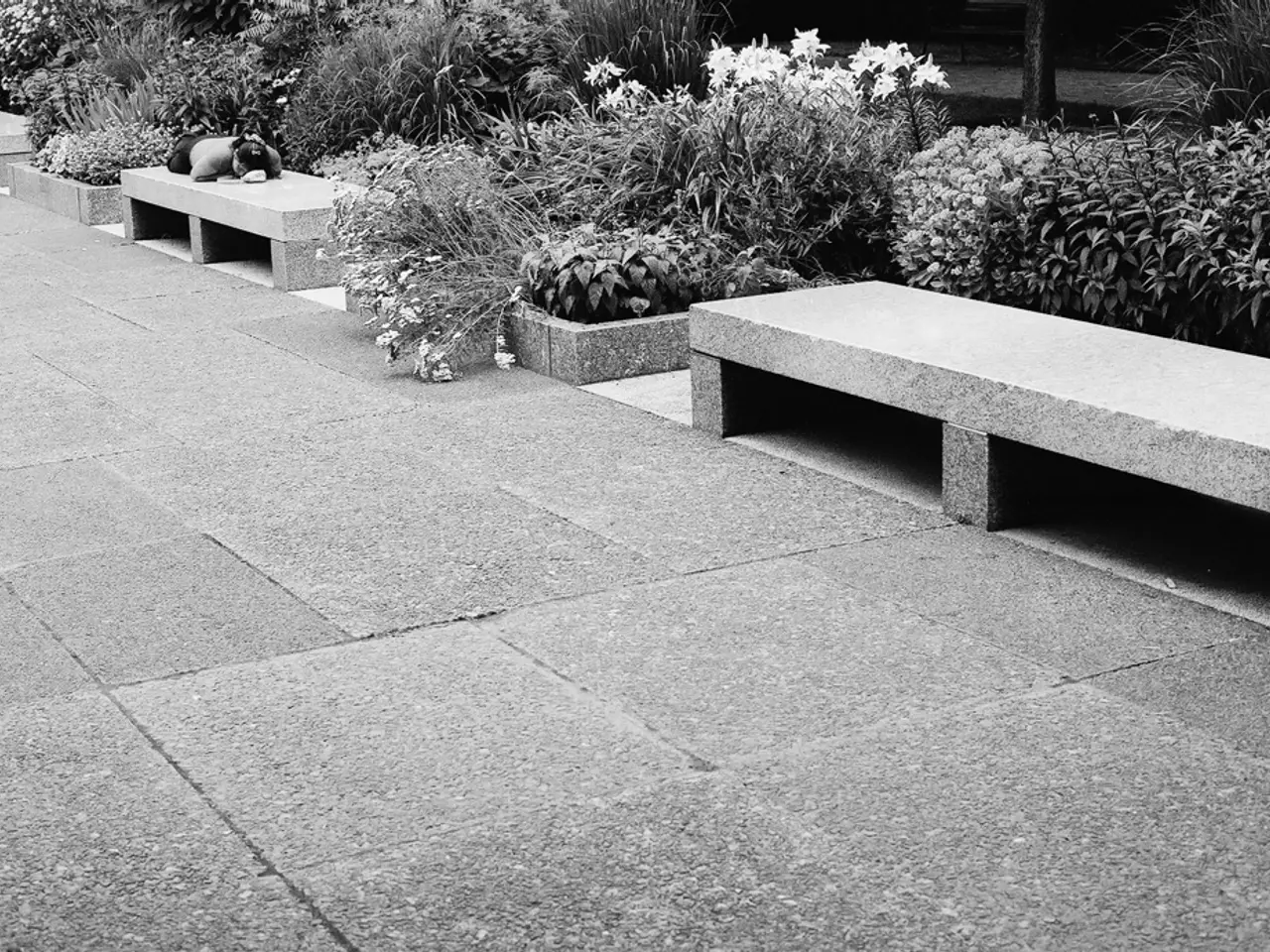Garden Size Reduction: Could Simple Blunders be the Reason?
===========================================================
A small garden doesn't have to feel cramped or disjointed. With the right design choices and a little bit of maintenance, you can create a spacious, harmonious, and visually open outdoor space. Garden design expert Nick Wood, from GardeningExpress, shares his insights on how to make the most of your small garden.
Mistakes to Avoid
Incorrect layering of plants can make a small garden feel smaller. To avoid this, consider utilizing vertical gardening techniques such as pergolas, trellises, wall-mounted planters, and climbing plants. These vertical elements can help create height and a more open feel in your small garden.
Common mistakes in small garden design include using inappropriate or bulky garden furniture, poor furniture placement, overcrowding plants, lack of cohesion in plant selection, and trying to fit too many design elements or making big statements. These errors create a cramped, disjointed, or cluttered look that reduces the perceived space.
How to Avoid or Fix Them
Inappropriate Garden Furniture and Placement
Using bulky furniture or placing seating against high walls can make the garden feel tight and disconnected. Instead, invest in appropriately sized furniture that complements the garden's scale, and position seating to face open spaces or views to visually expand the area.
Failing to Be Selective and Overcrowding
Adding too many plants or elements can make the space feel claustrophobic. Overcrowding plants also reduces airflow, blocks sunlight, and promotes disease. It's important to understand mature plant sizes and spacing needs, and avoid crowding by selecting fewer but well-chosen plants.
Lack of Planting Cohesion
Using many different plants each only once can create a chaotic and spotty appearance. Instead, repeat the same plants throughout the garden and cluster smaller plants in groups to create rhythm, cohesion, and a larger sense of mass.
Trying to Make a Massive Statement or Using Too Many Varieties
Overdoing color, materials, or design features can overwhelm a small space. Restraint is key—use neutral colors for hard surfaces and fences, allow fences to weather to neutral tones, and emphasize greenery to let vertical and boundary elements blend into the background rather than stand out.
Other Strategies
Taking advantage of the length of the garden is important in small spaces. Positioning seating on one end facing outwards and creating a focal point on the other end can make the space feel larger. Zoning the garden by sectioning off different areas for seating, planting, and activities for children and pets can make the space feel more functional and less flat.
Growing vegetables in pots can be a good option for small gardens, and they can even be grown on a balcony if that's the only outdoor space available. Regular garden maintenance is crucial to prevent the garden from becoming overgrown and looking messy or full.
Utilizing privacy plants and ground cover plants can help customize a small garden. Implementing garden lighting can make it look larger and more inviting, and can also serve as an effective way to make it appear more expensive. A bistro table and chairs set is a good choice for small gardens due to its compact size and foldability.
Nick Wood, a garden design expert at GardeningExpress with over a decade of experience, is passionate about making gardening accessible to everyone, regardless of the size of their space. He studied at Writtle College for eight years and provides tips to avoid making a small garden look smaller. By addressing these mistakes, a small garden can feel more spacious, harmonious, and visually open.
- Incorporating vertical gardening techniques, such as pergolas, trellises, wall-mounted planters, and climbing plants, can help make a small garden feel more spacious and open.
- Using selective furniture that complements the garden's scale and placing seating to face open spaces can prevent a small garden from feeling disconnected and tight.
- Repeating the same plants throughout a small garden and clustering smaller plants in groups can create rhythm, cohesion, and a larger sense of mass.
- Emphasizing greenery, utilizing privacy and ground cover plants, and implementing garden lighting can customize a small garden, making it look larger and more inviting while also appearing more expensive.




